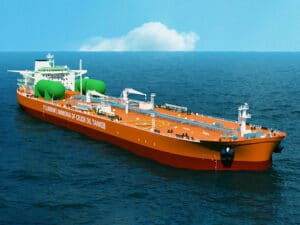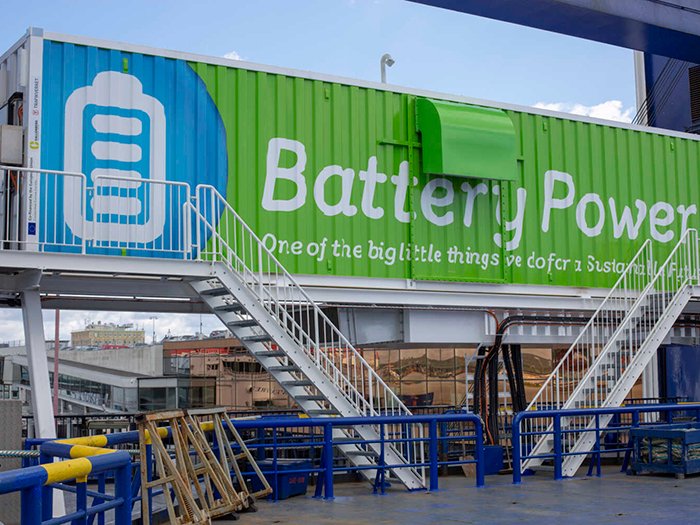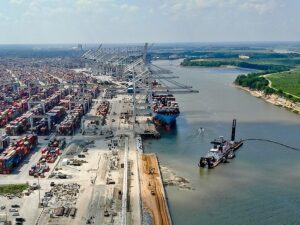
Shoreside power banks for electric vessels could use recycled batteries
Written by Nick Blenkey
Future shoreside battery banks coulduse recycled batteries [Image: Stena]
Sweden’s Stena Group, whose operations include Stena Rederi and Stena Line, is taking the next step in shipping electrification: the development of a new type of shoreside energy storage, similar to very large power banks, which will be essential for the quick charging of electric ferries in the future. The project is part-financed by the EU and will include investigating how used batteries from the transport sector can be reused for energy storage in ports.
A Stena subsidiary called Batteryloop has already made an impact in shoreside electrification, notably in the recycling of used batteries from the automotive industry. It recently signed aglobal collaboration agreement with Volvo Buses for the reuse of batteries from its electric vehicles.
“An incredible amount is happening in the world of batteries,” says Rasmus Bergström, managing director of Batteryloop. “New solutions are being designed to meet the charging requirements of the transport sector of the future, especially for shipping where vessels are starting to switch to electric power. Rapidly charging a large ferry, for example, requires a huge amount of energy in a short time and it’s not certain that the electricity grid will be able to deliver it. Local energy stores at ports could offer a great solution to this problem.”
“One thing is sure, batteries are here to stay,” says Bergström. “In order to conserve natural resources and make battery recycling sustainable, we need to do everything we can to use batteries for as long as possible. Our conclusion is that many batteries can have a second life as energy storage. If we can find solutions that will scale-up and work in ports, we’ll have a win-win situation in many ways.”
The project will map and evaluate opportunities to reuse lithium-ion batteries from the transport and automotive industry for energy storage in ports—to charge electric ferries, for example. The collaboration includes several Stena companies, Batteryloop, Stena Recycling, Stena Rederi and Stena Line, along with the ports of Gothenburg and Kiel and DNV GL.
The project will be carried out over two years and be part-financed by INEA, the EU’s Innovation and Networks Executive Agency.
As early as 2018, Stena Line began its investment in battery power on the ferry Stena Jutlandica, which uses battery power to drive the bow thrusters that steer the vessel into port.
“This is an important milestone in the electrification of shipping. Our future project, Stena Elektra—a fully electric ferry—is already on the drawing board. In order to succeed, we need to solve the issue of how to quickly charge a ferry. Energy storage at ports using recycled batteries, is a very interesting and sustainable alternative for the future,” says Per Wimby, project manager for electrification at Stena Teknik.
Quayside energy storage can also be used as a shoreside power source for vessels calling ports. Stena Line and the Port of Gothenburg have long been pioneers in this area and all Stena Line ferries are connected to green onshore power in Gothenburg.




